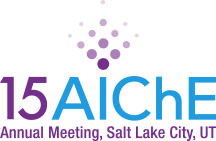

Liquid aminosilicone CO2 capture solvents have been developed that have the potential to significantly reduce the cost of carbon capture from pulverized coal power plants. Compared to aqueous amines, aminosilicones have the potential to reduce CO2 capture cost through higher CO2 absorption capacity, greater thermal stability, and reduced solvent losses due to lower volatility. A process utilizing aminosilicone dissolved in a glycol co-solvent will be demonstrated at the National Carbon Capture Center in 2015. This demonstration will generate engineering data needed to progress the technology toward commercialization. In parallel, a bench-scale project is focused on developing a process utilizing a phase-changing aminosilicone, which has the unique behavior of solidifying upon reaction with CO2. Economic analysis of these processes integrated with a coal-fired power plant suggests that aminosilicone-based CO2 capture is substantially more efficient and less costly than aqueous amine CO2 capture. Discussion of current process development activities and economic analyses for the pilot-scale solvent process and the bench-scale phase-change process will be presented.
